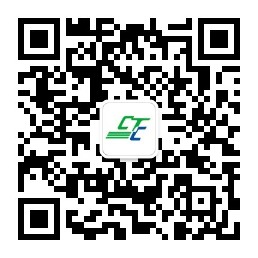
BE SAFE、BE CARE、BE KIND
What is the development prospect of feed additive industry? Demand drives continuous expansion of industrial scale
发布时间:2022-09-26 阅读:: 次
1、 Overview
Feed additive refers to a small amount or trace substance added in the process of feed production, processing and use, which has a small amount but significant effect in feed. Feed additive is an inevitable raw material for modern feed industry. It has obvious effects on strengthening the nutritional value of basic feed, improving animal production performance, ensuring animal health, saving feed costs, and improving the quality of animal products. At present, there are many kinds of feed additives, which can be divided into nutritional additives, feed protein additives, growth promoters, insect repellent health care agents, feed preservatives and other feed additives according to their effects.
2、 Drivers
1. Policies are good for industry development
As an inevitable raw material for the modern feed industry, feed additives are the most basic and important part of China's feed industry and aquaculture industry. Their development has also attracted the attention of relevant national departments. A series of relevant policies have been issued to support and standardize the development of the industry, providing a good policy environment for the industry.
2. The consumption of poultry and livestock products continues to increase
With the continuous development of China's economy and the improvement of residents' living standards, the residents' demand for meat, poultry, aquatic products and other animal husbandry products is gradually increasing. The growth of demand makes the scale of China's animal husbandry grow steadily, indirectly promoting the development of China's feed additive industry. According to the data, the per capita consumption of meat, poultry and aquatic products in China will be 24.8 kg, 12.7 kg and 13.9 kg respectively in 2020.
3、 Industrial chain analysis
1. Industrial chain
The upstream of feed additive industry chain mainly includes energy chemical industry, basic chemical industry, agriculture and other industries, providing isobutylene, acetylene, corn and other raw materials for industry production; The middle reaches are the production and supply links of feed additives. The products mainly include nutritional feed additives and non nutritional feed additives; The downstream is used in the production of various feeds, and ultimately used in livestock breeding, aquaculture, pets and other fields.
2. Demand side situation
The feed industry is the only downstream application field of feed additives. With the rapid development of China's breeding industry and the continuous expansion of the breeding scale in recent years, China's feed output has also increased year by year, promoting the development of China's feed additive industry. According to data, China's feed output will be 293.443 million tons in 2021, up 16.1% year on year.
4、 Industry status
1. Output value scale
As an inevitable raw material for modern feed industry, the scale of feed additive industry in China has also been growing with the rapid development of China's breeding industry in recent years. In 2019, the scale of output value affected by African swine fever has declined, and the scale of output value will rise to 93.29 billion yuan in 2020. By 2021, the output value of China's feed additive industry will reach 115.49 billion yuan, up 23.8% year on year.
From the regional distribution of output value, Shandong will account for 20.32% of the output value of feed additives in 2021, followed by Zhejiang and Inner Mongolia, accounting for 11.04% and 6.56% respectively.
2. Output
Driven by the continuous growth of downstream demand in recent years, the output of feed additives in China has also increased steadily. According to data, the output of feed additives in China will reach 14.775 million tons in 2021, up 6.2% year on year. Among them, the output of single feed additive was 13.679 million tons, up 5.5% year on year; The output of mixed feed additives was 1.096 million tons, up 16.2% year on year.
From the perspective of output structure distribution, mineral elements, amino acids and vitamins are still the main feed additives in China, accounting for nearly 90% of the total output in 2021. Specifically, in 2021, China's mineral element output will be 6.864 million tons, accounting for 46.5% of the total output, amino acid output will be 4.255 million tons, accounting for 28.8%, and vitamin output will be 1.773 million tons, accounting for 12%.
From the regional distribution of output, the top three provinces of feed additive output in China in 2021 are Shandong, Yunnan and Heilongjiang, with the output of 3.1152 million tons, 2.5338 million tons and 1.0293 million tons respectively.
3. Demand
From the perspective of demand, with the continuous growth of China's aquaculture industry, the demand for feed additives in China is also increasing. According to data, the demand for feed additives in China will be 13.959 million tons in 2021, up 7.3% year on year.
4. Revenue scale
From the perspective of industry revenue, thanks to the continuous expansion of the industry scale, the overall revenue of China's feed additive industry has been growing in recent years. Affected by swine fever in 2019, the revenue decreased, and then began to recover. By 2021, the revenue of feed additives in China will reach 111.04 billion yuan, with a year-on-year growth of 29.5%.
5. Number of enterprises
With the continuous expansion of the scale of China's feed additive industry in recent years, the number of industry related enterprises has also continued to grow. According to data, in 2021, there will be 64900 registered enterprises in the feed additive industry in China, with a year-on-year growth of 69.5%.
6. Import and export trade
From the perspective of industry import and export, as the domestic industry is very mature, China's feed additives are mainly exported. In recent years, the export volume of feed additives in China has shown a trend of increasing first and then decreasing. During 2015-2019, the export volume of feed additives made in China increased year by year. During 2020-2021, the global aquaculture industry was impacted by the epidemic, and the market demand decreased, so did the export volume. Specifically, in 2021, China will import 46800 tons of feed additives, with an import amount of 203 million dollars; The export volume was 717200 tons and the export amount was 871 million dollars.
7. Distribution of imports and exports
From the perspective of import distribution, the top three regions in the import amount of feed additives made in China in 2021 are the United States, Italy and France, accounting for 28.83%, 12.42% and 10.59% respectively.
From the perspective of export distribution, the top three regions in the export amount of feed additives made in China in 2021 are Vietnam, the Netherlands and Indonesia, accounting for 15.22%, 9.36% and 7.09% respectively.
5、 Development trend
At present, feed additives have integrated multiple disciplines and technologies. Its resources include animals, plants, minerals, chemical synthesis and biological products. Its functions have gradually evolved from supplementing nutrients to preventing and controlling diseases, improving feed utilization, improving the internal and external quality of feed, and improving the quality of animal products. Its application scope has also expanded to livestock, aquaculture and special economic animal husbandry. With the continuous improvement of people's understanding of green food and organic food, environmentally friendly and non-toxic enzyme preparations, ecological preparations, natural extracts, etc. will be widely used. In the future, China's feed additive industry should develop in the direction of science and technology, scale, specialization, serialization, green, environmental protection, functionality, economy, convenience and efficiency. In addition, with the improvement of people's living standards, people also put forward new special requirements for animal products, such as the color, meat quality, taste and health care functions of animal products. Most of these needs must be realized through the functions of feed additives. Therefore, the functionalization of feed additives is also a major direction of future development.










